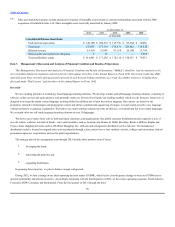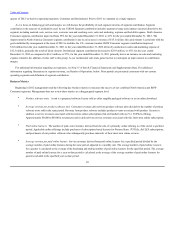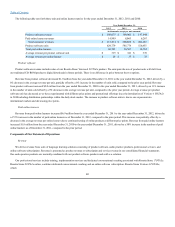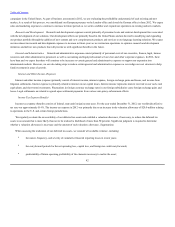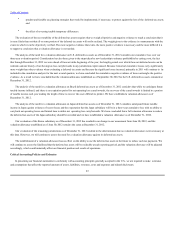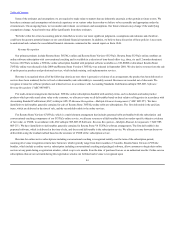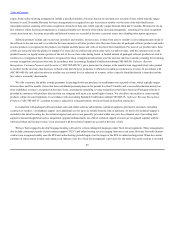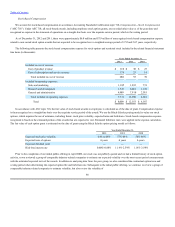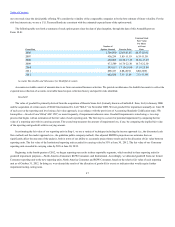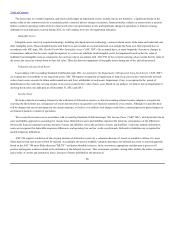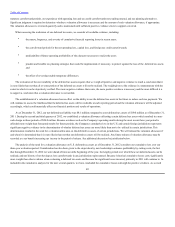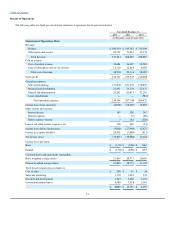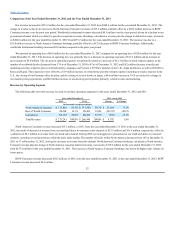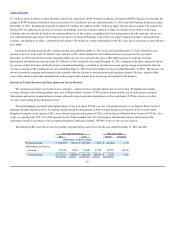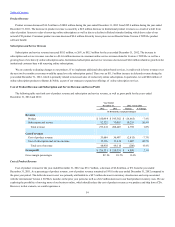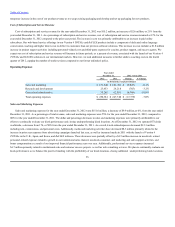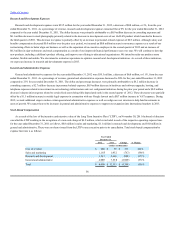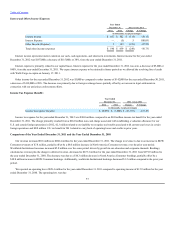Rosetta Stone 2012 Annual Report Download - page 51
Download and view the complete annual report
Please find page 51 of the 2012 Rosetta Stone annual report below. You can navigate through the pages in the report by either clicking on the pages listed below, or by using the keyword search tool below to find specific information within the annual report.
Table of Contents
The factors that we consider important, and which could trigger an impairment review, include, but are not limited to: a significant decline in the
market value of our common stock for a sustained period; a material adverse change in economic, financial market, industry or sector trends; a material
failure to achieve operating results relative to historical levels or projected future levels; and significant changes in operations or business strategy.
Although no such indicators occurred during 2012, we will continue to review for impairment indicators.
Intangible assets consist of acquired technology, including developed and core technology, customer related assets, trade name and trademark and
other intangible assets. Those intangible assets with finite lives are recorded at cost and amortized on a straight line basis over their expected lives in
accordance with ASC topic 350, ("ASC 350"). On an annual basis, or more frequently if events or changes in
circumstances indicate that the assets might be impaired, we review our indefinite lived intangible assets for impairment based on the fair value of
indefinite lived intangible assets as compared to the carrying value in accordance with ASC 350. In the event the carrying value exceeds the fair value of
the assets, the assets are written down to their fair value. There has been no impairment of intangible assets during any of the periods presented.
In accordance with Accounting Standards Codification topic 360, ("ASC 360"),
we evaluate the recoverability of our long-lived assets. ASC 360 requires recognition of impairment of long-lived assets in the event that the net book
value of such assets exceeds the future undiscounted net cash flows attributable to such assets. Impairment, if any, is recognized in the period of
identification to the extent the carrying amount of an asset exceeds the fair value of such asset. Based on our analysis, we believe that no impairment of
our long-lived assets was indicated as of December 31, 2012 and 2011.
We believe that the accounting estimate for the realization of deferred tax assets is a critical accounting estimate because judgment is required in
assessing the likely future tax consequences of events that have been recognized in our financial statements or tax returns. Although it is possible there
will be changes that are not anticipated in our current estimates, we believe it is unlikely such changes would have a material period-to-period impact on
our financial position or results of operations.
We account for income taxes in accordance with Accounting Standards Codification topic 740, ("ASC 740"), which provides for an
asset and liability approach to accounting for income taxes. Deferred tax assets and liabilities represent the future tax consequences of the differences
between the financial statement carrying amounts of assets and liabilities versus the tax bases of assets and liabilities. Under this method, deferred tax
assets are recognized for deductible temporary differences, and operating loss and tax credit carryforwards. Deferred tax liabilities are recognized for
taxable temporary differences.
ASC 740 requires a reduction of the carrying amounts of deferred tax assets by a valuation allowance if, based on available evidence, it is more
likely than not that such assets will not be realized. Accordingly, the need to establish valuation allowances for deferred tax assets is assessed quarterly
based on the ASC 740 more-likely-than-not ("MLTN") realization threshold criterion. In the assessment, appropriate consideration is given to all
positive and negative evidence related to the realization of the deferred tax assets. This assessment considers, among other matters, the nature, frequency
and severity of current and cumulative losses, forecasts of future profitability, the duration of
48


